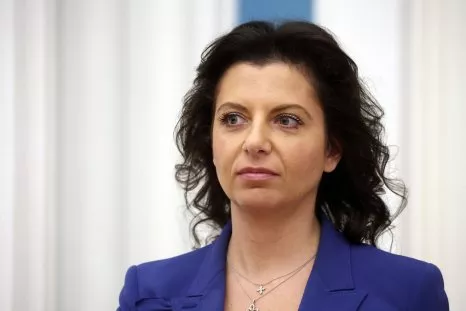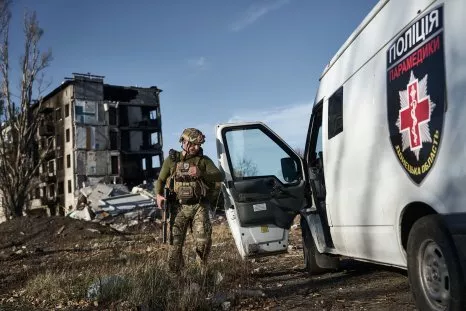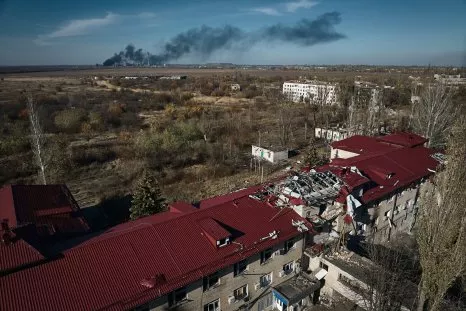Russia Is Catching Up in the Ukraine Drone War
Russia is hard at work upgrading its airborne drone fleets, desperate to catch the lead Ukraine quickly established in the unmanned war rolling on in the skies above the war-torn country.
And it may be starting to show. Moscow has hammered Ukraine with kamikaze drone strikes, kicking into gear a winter campaign designed to hit Ukraine's infrastructure and energy systems where it hurts.
But the Kremlin has been busy modifying its cheap, and often effective, suicide drones in preparation for the second winter of all-out war.
Against the backdrop of the largest drone strike of the 21-month-long invasion of Ukraine just days ago, the Kremlin debuted a new, black-painted version of the now-infamous, Iranian-designed Shahed drones.
And it's not just one of its unmanned aerial vehicles (UAVs) that Russia has tinkered with, and it could mean Moscow heads into the winter with more drone firepower than ever before.
"Russia has been somewhat behind in drones, but it is slowly catching up," said Marina Miron, a postdoctoral researcher at the Department of War Studies at King's College London told Newsweek in early August.
However, Ukraine—a powerhouse of drone development—is far from defenseless and likely has a trick or two up its sleeve even against the new and improved Shaheds.
Shiny New Shaheds
On Saturday, Ukraine said Moscow launched a "record number" of Shahed drones on its territory, sending 75 UAVs over Ukraine from two sites in Russia. The Ukrainian military said the drones hit at least six regions, including the capital, Kyiv.
Ukraine initially said the country's air defenses had destroyed 71 of the drones, but a revised tally upped the count to 74 UAVs. Early on Sunday, Ukraine's air force then said Moscow had launched another nine Shahed drones, eight of which Ukraine intercepted.
Kyiv's air force quickly described a new, darker version of the drone made from carbon fiber, able to absorb radar signals and "hamper the air defense efforts."
This type of modification could make the drones more stealthy, as darker drones will be harder to detect by searchlights in overnight attacks, analysts argue.
Yet scratching under the surface—or the new paintwork—could indicate other changes. Switching to materials like carbon fiber could strip weight from uncrewed vehicles and make them stronger, according to drone expert Steve Wright.
"Every kilogram that is eliminated from the structure of the airframe itself means another kilogram of warhead or fuel that can be carried, making the machine ever more effective at its mission," he told Newsweek.
Military expert David Hambling said that "there may also be improvements to guidance to make them harder to jam or improved warheads."
Shahed drones, a common feature of the war since its early days, "will be increasingly important, especially if they can be produced in very large numbers" rather than exhausting supplies of expensive missiles, Hambling told Newsweek.
Russia may have invested in simplifying the drone designs and made them easier to mass-produce. The key to Russia's Shahed success would be using swarms of UAVs to overwhelm Ukraine's defenses, and 75 drones in a single night is the largest recorded wave yet, he said.
"We know Russia is seeking to produce these locally rather than import from Iran, and there has already been some sign of parts being replaced with Russian-made components suggesting that assembly is now taking place in Russia," Hambling said.
Russia is known to have powered on with the construction of a new domestic facility designed to mass-produce the Shahed UAVs previously made in Iran, which are known as "Geran" drones in Russia.
"Russia can be expected to accelerate its Shahed-136 attacks against Ukraine's vital energy infrastructure, causing brutal living conditions for the civilian population" as work on this facility progresses, the nonprofit Institute for Science and International Security evaluated earlier this month.
"The Russians may also have upgraded them in other ways, and this will be of great interest to analysts," Hambling said.
Indeed, these improvements to the Shaheds were "a logical next step in Russia's own claims that this is now indeed a Russian-made 'Geran,'" Samuel Bendett of the United States-based Center for Naval Analyses told Newsweek.
Newsweek reached out to the Russian Ministry of Defense for comment.
Are the tweaks a game changer?
But these adjustments are unlikely to be revolutionary.
"Although the radar-absorbing coatings used by stealth aircraft are based on carbon, the carbon-fiber sheeting being used in these updated Shahed UAVs is not much less reflective as the metal that has been used previously," said Wright.
And while the darker color works in overnight launches, it will make the Shaheds much easier to track in daylight from the ground, he added. But there are other changes in Russian drone designs that could have more of an impact than the current Shahed alterations.
"The real issue is whether Russia would get the next upgraded Shahed version shown in Iran recently that has a jet engine and can fly faster and presumably quieter," Bendett said.
Iran has developed a new Shahed-238 kamikaze drone, which is a jet-powered version of the Shahed-136, the larger sibling of the Shahed-131. The Shahed-238 appears to be painted black, but it is not clear whether Russian forces used this new drone model in its large-scale strike over the weekend, according to the Institute for the Study of War think tank.
Russia has also upgraded its Lancet kamikaze drone, known as the "Izdeliye-53," with a new guidance system. Russian forces have been using this drone in Ukraine since mid-October, the ISW said late last month.
Along with the long-range Italmas drone, the new generations of drones "present a real danger for the Ukrainian assets that now have to be located farther from the line of contact," Bendett said. "Both the Lancet and the Italmas now have much longer ranges, so they may be used against both military and civilian targets."
What can Ukraine do?
If Kyiv's figures are to be believed, Ukraine is adept at batting away the vast majority of the Shaheds. Ukraine has enjoyed no small amount of success with various weapons, including the German-made Gepard anti-aircraft guns and large-caliber machine guns.
"Packing enough such weapons around a target gives a good chance of downing the slow, low-flying Shahed, but such defenses only have short range and Russia will switch targets to try and avoid them," Hambling said.
Protecting against Shaheds is "not just a job for a single system but a combination of systems that identify and shoot down these drones," like the Gepards and machine guns, added Bendett.
"The drone engine may be quieter, and the drone may have a darker coloring, but as long as it is essentially the same drone type, it can still be identified and eventually shot down," he said.
But Ukraine needs to keep its Shahed defenses cheap because Moscow "won't stop sending these UAVs against Ukraine in the coming months," he added.
Kyiv may even bring in interceptor drones in the future, although Ukraine has been tight-lipped about this technology, Hambling said. "In the absence of other airpower, this type of drone offensive will be increasingly important, but we may not hear the full story until after the war."
"Just as we have been expecting, the drones arms race over Ukraine thunders on," Wright said.
Disclaimer: The copyright of this article belongs to the original author. Reposting this article is solely for the purpose of information dissemination and does not constitute any investment advice. If there is any infringement, please contact us immediately. We will make corrections or deletions as necessary. Thank you.





